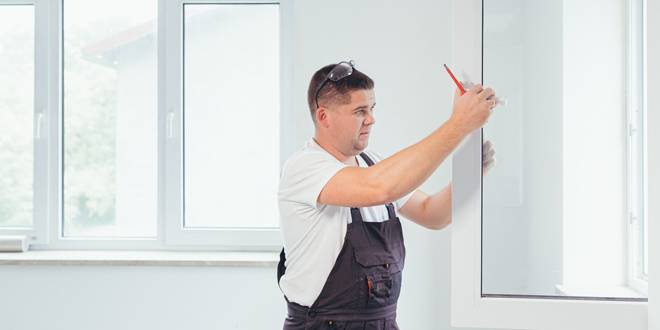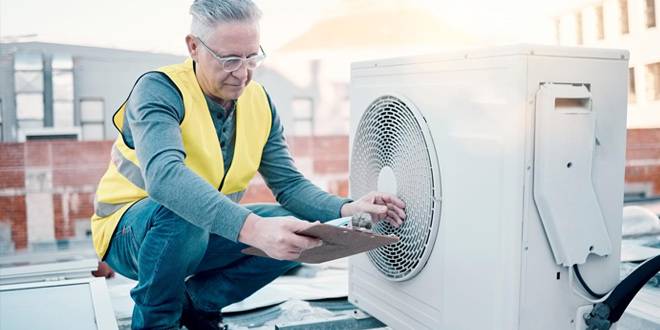
Infiltrating outdoor air plays a pivotal role in shaping the indoor climate of buildings. At Spencer Air Conditioning and Heating, we delve into the mechanisms behind this unseen process, ensuring spaces not only breathe efficiently but also sustain occupant well-being and environmental harmony.
Natural Ventilation vs. Mechanical Ventilation
In the quest for optimal indoor air quality, the methods by which outdoor air enters a building—namely natural and mechanical ventilation—play critical roles. Understanding the distinction between these two is essential for designing and maintaining healthy, comfortable indoor environments.
- Natural Ventilation: This process involves the unforced outside air movement into a building through opened windows, doors, vents, and other intentional openings. It’s a method as old as architecture itself, relying on natural forces like wind and thermal buoyancy to facilitate air exchange. Natural ventilation is most effective in environments where the outdoor air is clean and temperate, making it a cost-effective way to enhance indoor air quality without significant energy consumption. However, its effectiveness can be limited by external pollution, noise, and security concerns, as well as by climatic conditions that may not always be conducive to open windows or doors.
- Mechanical Ventilation: Conversely, mechanical ventilation systems use fans and ductwork to control air infiltration and exfiltration in commercial buildings. This method offers precise control over air exchange rates, filtration, and distribution. It makes it indispensable in buildings where natural ventilation cannot meet the required air quality standards or in highly polluted or noisy environments. Through systems such as HVAC (Heating, Ventilation, and Air Conditioning), we can ensure a constant supply of filtered and sometimes temperature-controlled air. However, mechanical ventilation systems require energy to operate, potentially increasing a building’s carbon footprint and operational costs.
Both ventilation methods have their place in modern building design and operation. Natural ventilation is appreciated for its energy efficiency and ability to connect indoor spaces with the outdoor environment in a direct, sustainable manner. Mechanical ventilation, on the other hand, is valued for its reliability, control, and enhanced comfort and safety it can provide, especially in challenging climates or urban settings with higher pollution levels.
The Role of Building Design and Construction
The design and construction of a building significantly influence how and how much outdoor air infiltrates it. A well-thought-out design can minimize unwanted air leakage while ensuring adequate ventilation for a healthy indoor environment. At Spencer Air Conditioning and Heating, we recognize the critical role that building design and construction play in the overall performance of a building’s ventilation system.
- Building Envelope Integrity: The building envelope, comprising the walls, roof, windows, doors, and foundation, serves as the barrier between the indoor and outdoor environments. Its integrity is crucial in controlling air and moisture infiltration. Proper sealing and insulation can reduce unwanted drafts and energy loss, while strategically placing operable windows and vents can facilitate natural ventilation when conditions are right. The choice of materials also plays a role; for instance, materials with higher thermal mass can help moderate indoor temperatures and reduce reliance on mechanical ventilation for heating and cooling.
- Architectural Features and Layout: The physical layout and architectural features of a building can enhance or hinder natural ventilation. Features such as atriums, courtyards, and strategically placed windows can create pressure differentials that promote air movement through a building. The orientation of a building also affects its ventilation potential; for example, aligning windows and openings to take advantage of prevailing winds can significantly improve natural air exchange rates.
- Innovative Construction Techniques: Advances in construction technology have introduced new ways to enhance a building’s ventilation capabilities. For instance, air barrier systems can provide continuous protection against air leakage, while smart windows can adjust their opacity to control solar gain and reduce cooling loads. Moreover, green roofs and walls can improve insulation and reduce heat absorption, decreasing the need for mechanical cooling and ventilation.
Health and Comfort Implications of Air Infiltration
The infiltration of outdoor air into buildings has profound implications for the health and comfort of occupants. At Spencer Air Conditioning and Heating, we understand that the quality of indoor air is influenced not just by the air that circulates within a space but also by the air that enters from outside. This understanding is crucial for maintaining environments that support occupant well-being.
Health Impacts
Outdoor air can carry pollutants, allergens, and other harmful substances into a building. Without proper filtration and ventilation, these contaminants can degrade indoor air quality, potentially leading to health issues among occupants. Symptoms such as headaches, dizziness, respiratory problems, and allergic reactions can be exacerbated or triggered by poor indoor air quality. Therefore, controlling the source of outdoor air infiltration and ensuring it is properly filtered is essential for minimizing health risks.
Comfort Factors
Beyond health, the comfort of building occupants is significantly affected by air infiltration. Temperature, humidity, and air movement contribute to how comfortable an environment feels. Infiltrating air can cause fluctuations in these variables, leading to spaces that feel too cold, too hot, or excessively humid. Moreover, drafts from uncontrolled air infiltration can create uncomfortable conditions, disrupting the thermal comfort of occupants. Managing air infiltration effectively ensures that indoor environments remain within comfortable ranges for temperature and humidity.
Energy Efficiency and Indoor Air Quality
There is a delicate balance between energy efficiency and indoor air quality regarding air infiltration. On one hand, reducing air infiltration can help conserve energy by maintaining stable indoor temperatures and reducing the load on heating and cooling systems. On the other hand, a certain level of outdoor air exchange is necessary to dilute indoor pollutants and replenish oxygen levels. Achieving this balance requires a thoughtful approach to ventilation design that considers both the health and comfort of occupants and the energy performance of the building.
Strategies for Optimizing Air Infiltration
Optimizing air infiltration is about striking the right balance between indoor air quality, occupant comfort, and energy efficiency. At Spencer Air Conditioning and Heating, we advocate for a strategic approach to managing air infiltration that enhances the performance and sustainability of buildings. Here are several strategies we implement and recommend:
1. Comprehensive Air Sealing
The first step in optimizing air infiltration is to minimize unwanted drafts through comprehensive air sealing. Identifying and sealing leaks in the building envelope, including around windows, doors, and utility penetrations, can significantly reduce uncontrolled air exchange. This process not only improves comfort and indoor air quality by preventing the infiltration of pollutants but also enhances energy efficiency by reducing heating and cooling demands.
2. Advanced Filtration Systems
Incorporating advanced filtration systems into HVAC equipment ensures that the air entering a building is clean and free of harmful particles. High-efficiency particulate air (HEPA) filters and other sophisticated filtration technologies can capture a broad range of contaminants, including pollen, dust, mold spores, and bacteria, thereby improving the quality of indoor air.
3. Energy Recovery Ventilation (ERV) Systems
ERV systems represent a pivotal technology in the optimization of air infiltration. These systems facilitate controlled ventilation by exchanging heat and moisture between incoming and outgoing airstreams. In winter, they preheat and humidify incoming cold, dry air using the heat and moisture from the outgoing air. In summer, the process is reversed, helping to cool and dehumidify incoming hot, moist air. This exchange improves comfort and air quality while significantly reducing energy costs associated with heating and cooling.
4. Smart Building Technologies
Leveraging smart building technologies allows for dynamic control over air infiltration and indoor environmental conditions. Automated window openers, variable air volume (VAV) systems, and smart thermostats can adjust ventilation rates based on real-time occupancy, indoor air quality sensors, and external weather conditions. This intelligent control ensures optimal indoor air quality and energy use at all times.
5. Regular Maintenance and Inspections

Ongoing maintenance and inspections of HVAC systems and building envelopes are crucial for ensuring that strategies for optimizing air infiltration remain effective over time. At Spencer Air Conditioning and Heating, we emphasize the importance of regular check-ups to identify any issues that may compromise air quality or energy efficiency, such as clogged filters, leaks in the ductwork, or degraded insulation.
By implementing these strategies, we help our clients achieve buildings that are not only energy-efficient but also provide a safe, comfortable, and healthy environment for occupants. The integration of advanced technologies and best practices in building maintenance and operation is key to our approach, ensuring that air infiltration is optimized for the benefit of all.
Breathe Easy with Us
Elevate your indoor air quality and comfort while optimizing energy efficiency. Trust Spencer Air Conditioning and Heating to guide you through the complexities of air infiltration with state-of-the-art solutions tailored to your needs. 🏡💨 Let us ensure your space breathes just right—reach out today for unparalleled service. 🌟📞 Your healthier, more comfortable indoor environment starts with us.




